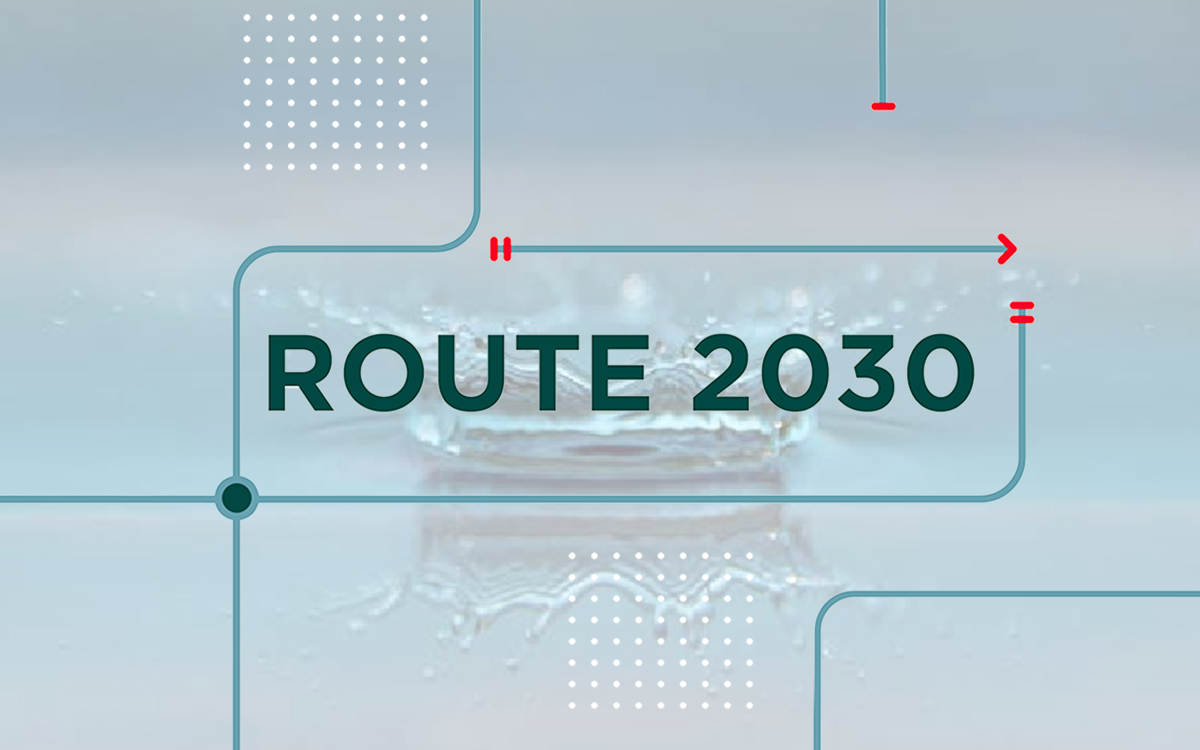Route 2030: Water stewardship and responsible consumption as an important component of our sustainability plan
B.I.G. is on course to achieve a zero environmental footprint by 2030. That is right, zero. To make this journey more tangible, we would like to offer you a passenger’s seat from which you will be able to really get up close and immerse yourself in our various sustainability projects. In this edition: Responsible water stewardship as an important component of sustainable evolution.
Water is vital for all life on the planet. Yet, today, the once-so- plentiful resource is running dry, with more and more regions facing water stress. The issues concerning water scarcity and water pollution should alarm us all. The main problems? Next to agriculture and the energy sector, the majority of the world’s water is used by industrial organizations. B.I.G. is no exception. Water is an irreplaceable resource in some of our operations. In 2023, we performed a water stress assessment using the SDG 6 indicator that defines the level of water stress according to ‘fresh water withdrawal as a proportion of available fresh water resources’. The result: 7 of our 13 B.I.G. production locations are medium or high water stress areas.
Center of Excellence for Water
We’re well aware of the effect our water footprint has on the environments and communities we operate in. Specific targets, at plant and organizational level, have been defined by our Center of Excellence for Water at the beginning of 2024. “In 2023, we put a lot of effort into understanding our Group’s water consumption: how much water we use, in which operations, and where it comes from. There’s no point in defining targets if this isn’t crystal clear. Now it is, so we’re working on action plans for all sites”, says Matteo Agostini, Chair of the Center of Excellence for Water. In those action plans we describe what we want to obtain; we want to source water responsibly and putting water stewardship top of every site’s agenda, decrease our consumption of ground water and municipal water across the Group by 20%, compared to 2022, and reduce our consumption of surface water and discharging it back into nature at least as clean as it first was. In addition, to minimize our impact, we continue to explore new technologies to take our ambitions to the next level.
Changes in operations
Our global water consumption increased in 2023. The main reason is that our Polymers site in the USA was operational during the entire year, while in 2022 operations were temporarily put on hold to allow for large-scale maintenance. And since Pinnacle Polymers uses surface water for cooling, this makes a big difference. Changes in operations can also account for a decrease in water consumption. For example, B.I.G.’s consumption of municipal water dropped by 10%, but partially due to reduced activities.
Progress on water stewardship
But we also made clear progress on water stewardship in 2023. Our global ground water consumption decreased by 25%. Part of that progress can also be linked to the sustained efforts by the teams at Beaulieu Fibres International in Italy and Beaulieu Flooring Solutions Europe in Belgium to reduce their consumption of ground water. At our Italian site, water consumption was reduced by 25%, compared to 2021. In addition, our global storm water consumption increased by 60%. Storm water still represents a small part of our total water consumption, but every step counts. Not to forget that many sites made water stewardship a top priority. For example our Needle Felt and Polychim teams successfully started to replace fresh water with rain water. On top of that, we have the Tessutica achievement of using 100% rain and recycled water in 2023.
Internal water pricing
“Building on the more familiar concept of carbon pricing, we’re looking into the feasibility and added value of internal water pricing”, explains Clara Carelli, Group Sustainability Director. “This approach factors in the social, environmental, and economic risks and benefits of water management policies. The ‘price’ is then used to inform business decisions about water consumption, water recycling, water discharging, etc. In other words, internal water pricing can help to build the incentivization and backing needed for investment in high-impact projects. In 2024, we’ll further explore how we could implement this strategy in our Group”, concludes Clara Carelli.
